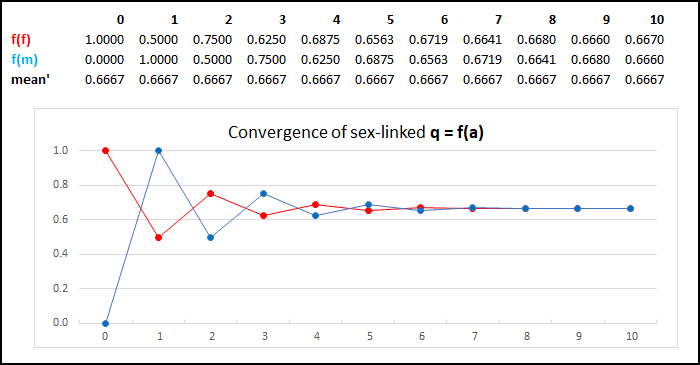
Approach to Hardy-Weinberg Proportions at sex-linked loci

Consider a sex-linked locus in a species where females are XX (homogametic) and males are XY (heterogametic). Suppose f(a) is initially unequal in females and males, with f(a)f = 1.0 and f(a)m = 0.0. (1) Because each female receives an X chromosome from both parents in generation n, the female f(a) in generation n+1 is the mean of the male and female f(a) in generation n. (2) Because each male in receives an X chromosome only from the female parent in generation n, the frequency of the allele f(a) in females of generation n determines f(a) in males in generation n+1. The male f(a) therefore "chases" the female f(a) in the preceding generation until they reach approximate equality.
In this example,
note that frequencies are within 1% of each other in the seventh
generation, even when the initial frequencies are completely
divergent.
In the special
case above, the mean f(a) for a sex-linked locus is a
constant [(2 x f(a)
+ 1 x f(a)) / 3 ].
Thus the initial f(a) = (2 x 1
+ 1 x 0) = 0.6667 and remains
constant, even though it varies between sexes.
HOMEWORK:
Suppose initial f(a) = 0.0
in females, and f(a) = 1.0
in males [The reverse of the graph above]. Calculate & graph
the expected allele and genotype frequencies in
males & females over the first seven generations.